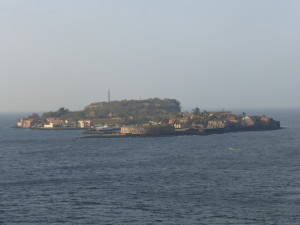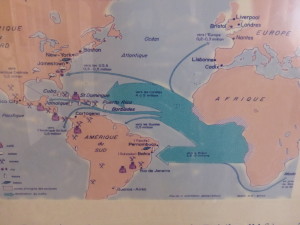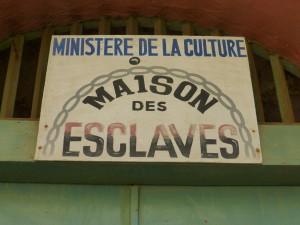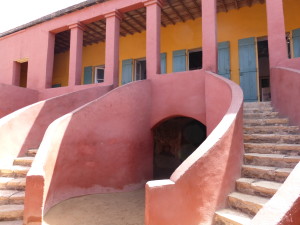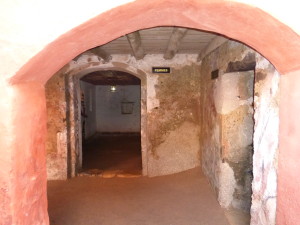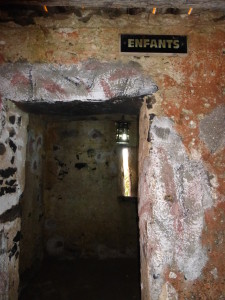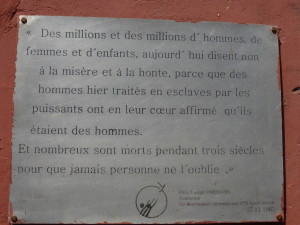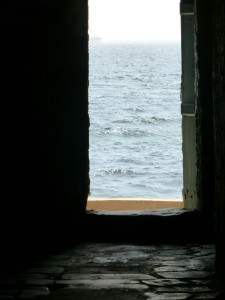Goree Island is home to the infamous door which sent millions of black Africans from their homes into slavery to the Americas. The small, beautiful island of Goree just off the west coast of Senegal, Africa was a main shipping port for West African slaves sold to the Americas. It is said that more than 2 to 3 million West African slaves were brought here to be fattened up and sold into the American slave trade.
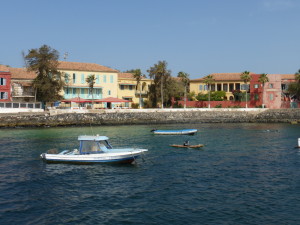 Ironically, arriving on ferry from Dakar, Senegal to the small island two kilometers from the mainland, you first notice how strikingly beautiful the island is. The fortress at one corner of the island was strategically place on Goree Island as a lookout and first line of combat in protection of the city of Dakar. Colorful painted businesses and homes greet you as you disembark the ferry terminal onshore. Despite the bright colorful surroundings, the island’s history is dark.
Ironically, arriving on ferry from Dakar, Senegal to the small island two kilometers from the mainland, you first notice how strikingly beautiful the island is. The fortress at one corner of the island was strategically place on Goree Island as a lookout and first line of combat in protection of the city of Dakar. Colorful painted businesses and homes greet you as you disembark the ferry terminal onshore. Despite the bright colorful surroundings, the island’s history is dark.
As Dakar is the most western city in Africa, both the city of Dakar and its nearby Goree Island, along with many similarly placed islands along Africa’s western coast line, became a central locations in the slave trade business.
Goree Island has a shady history, and we learned a bit about the atrocities of the island. Famous for its “House of Slaves,” it has been claimed that more than a million people passed through this house en route to a life of slavery. They were stripped of all of their papers and even their names, as the slaves’ new owners would want to give them new names.
The small building was divided into rooms for men, women, underweight men, and children. These rooms were packed with Africans, sometimes so tightly full that they were unable to lay or even to sit down comfortably.
The prices of the slaves were based on their strength and workability. Underweight men were a liability as, if they were too frail, they were not likely to survive the passage to the Americas, mainly to Brazil, Cuba and the U.S. They were given a different area of the house where they were to gain weight in order to be sellable. On our tour of the house, we saw ourselves the grim conditions the captives had to endure. Small cells were allocated for 15-20 men. Children ages 6 to 17 years old were separated from their families and put in cells alone.
Perhaps the most sobering spot in the House of Slaves, is the door in the rear of the house leading to the seashore. Known as the “Door of No Return,” it was the door the slaves’ final exit point where, in shackles, they boarded the ships to unknown lands.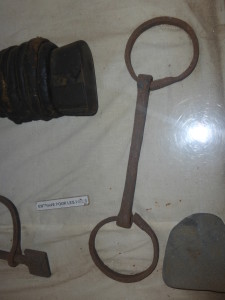
As part of The Goree Island UNESCO world heritage site, the Maison des Esclaves, and its tour was a sobering reminder of history. I was pleased to hear that our visit followed Nelson Mandela, Pope John Paul 2, and several U.S. Presidents, including President Obama less than a year ago. It is my hope that awareness of these types of atrocities will help forge a more peaceful future for all of us.
